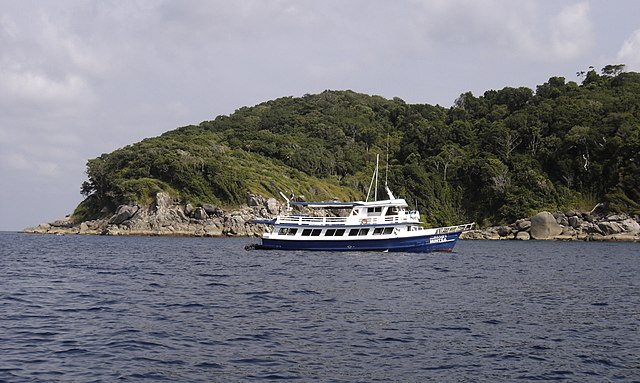A dive boat is a boat that recreational divers or professional scuba divers use to reach a dive site which they could not conveniently reach by swimming from the shore. Dive boats may be propelled by wind or muscle power, but are usually powered by internal combustion engines. Some features, like convenient access from the water, are common to all dive boats, while others depend on the specific application or region where they are used. The vessel may be extensively modified to make it fit for purpose, or may be used without much adaptation if it is already usable.
A liveaboard dive boat on the Similan Islands, Thailand
Deck of a dive boat for about 35 divers, with equipment and whiteboard for dive planning
Travelling to the dive site in a fast RIB. This boat is licensed to carry 12 divers and can travel at over 30kt on flat water
Flush decked dive boat with transom platform and ladder, and shade awning, suitable for tropical use over short distances.
Recreational diving or sport diving is diving for the purpose of leisure and enjoyment, usually when using scuba equipment. The term "recreational diving" may also be used in contradistinction to "technical diving", a more demanding aspect of recreational diving which requires more training and experience to develop the competence to reliably manage more complex equipment in the more hazardous conditions associated with the disciplines. Breath-hold diving for recreation also fits into the broader scope of the term, but this article covers the commonly used meaning of scuba diving for recreational purposes, where the diver is not constrained from making a direct near-vertical ascent to the surface at any point during the dive, and risk is considered low.
Beginner diver in St. Croix, United States Virgin Islands
Scuba diver in Panama
Free diver (breath hold) in Cyprus
Freediving while snorkeling in shallow water, Red Sea








